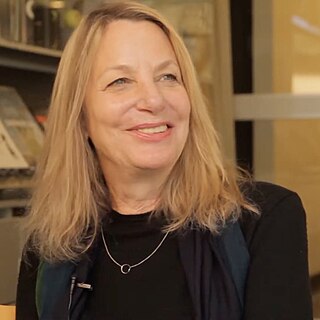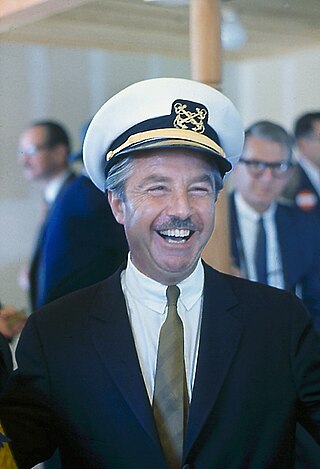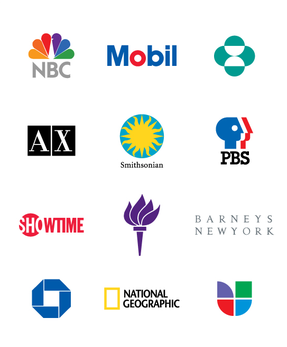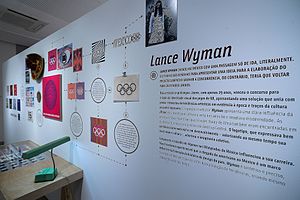Landor is a brand consulting firm founded in 1941 by Walter Landor, who pioneered some research, design, and consulting methods that the branding industry still uses.

Milton Glaser was an American graphic designer, recognized for his designs, including the I Love New York logo; a 1966 poster for Bob Dylan; the logos for DC Comics, Stony Brook University, Brooklyn Brewery; and his graphic work on the introduction of the iconic 1969 Olivetti Valentine typewriter.

Paula Scher is an American graphic designer, painter and art educator in design. She also served as the first female principal at Pentagram, which she joined in 1991.

April Greiman is an American designer widely recognized as one of the first designers to embrace computer technology as a design tool. Greiman is also credited, along with early collaborator Jayme Odgers, with helping to import the European New Wave design style to the US during the late 70s and early 80s." According to design historian Steven Heller, “April Greiman was a bridge between the modern and postmodern, the analog and the digital.” “She is a pivotal proponent of the ‘new typography’ and new wave that defined late twentieth-century graphic design.” Her art combines her Swiss design training with West Coast postmodernism.

Massimo Vignelli was an Italian designer who worked in a number of areas including packaging, houseware, furniture, public signage, and showroom design. He was the co-founder of Vignelli Associates, with his wife, Lella. His motto was, "If you can design one thing, you can design everything," which the broad range of his work reflects.

Arthur Samuel Wilbur Chantry II is a graphic designer often associated with the posters and album covers he has done for bands from the Pacific Northwest, such as Mudhoney, Mono Men, Soundgarden, and The Sonics.

Michael Bierut is a graphic designer, design critic and educator, who has been a partner at design firm Pentagram since 1990. He designed the logo for Hillary Clinton's 2016 presidential campaign.

Steven Heller is an American art director, journalist, critic, author, and editor who specializes in topics related to graphic design.

Allan Robb Fleming was a Canadian graphic designer best known for having created the Canadian National Railway logo, designing the best-selling 1967 Centennial book Canada: A Year of the Land/Canada, du temps qui passe, and for revolutionizing the look of scholarly publishing in Canada, particularly at University of Toronto Press.

Pedro Ramírez Vázquez was a Mexican late twentieth century architect. He was born in Mexico City. He was persuaded to study architecture by writer and poet Carlos Pellicer.

Walter Joseph Landor was a brand designer and the founder of Landor & Fitch. He was an acclaimed designer and a pioneer of branding and consumer research techniques widely used to this day. Landor, the company he founded as Landor Associates in 1941, has offices around the world.

Chermayeff & Geismar & Haviv is a New York–based branding and graphic design firm. It is currently led by partners Tom Geismar and Sagi Haviv.

James Burkey Belser was an American graphic designer. He is best known for his design of the nutrition facts label, the U.S. Food and Drug Administration (FDA) mandated food labeling system that appears on all packaged foods in the United States, which has been called by some "the most frequently reproduced graphic in the world." He is also widely known for the pioneering work in legal advertising that earned him a Lifetime Achievement Award from the Legal Marketing Association as well as induction into that organization's Hall of Fame.
Jennifer Morla is an American graphic designer and professor based in San Francisco. She received the Cooper Hewitt Smithsonian National Design Award in Communication Design in 2017.

Sagi Haviv is an Israeli-American graphic designer and a partner in the design firm Chermayeff & Geismar & Haviv. Called a "logo prodigy" by The New Yorker, and a "wunderkind" by Out magazine, he is best known for having designed the trademarks and visual identities for brands and institutions such as Discovery, Inc.'s online streaming service Discovery+, the United States Olympic & Paralympic Museum, the US Open tennis tournament, Conservation International, Harvard University Press, and L.A. Reid's Hitco Entertainment, and tech and electric car company Togg.

George Tscherny was a Hungarian-born American graphic designer and educator. Tscherny received the highest honors among graphic designers. He was awarded the AIGA Medal in 1988, celebrated in the annual Masters Series in 1992 at the School of Visual Arts, and inducted into the Art Directors Club Hall of Fame in 1997. He worked in a number of areas ranging from U.S. postage to identity programs for large corporations and institutions.

Lella Vignelli was an Italian architect, designer, and businesswomen. She collaborated closely throughout much of her life with her husband Massimo Vignelli, with whom she founded Vignelli Associates in 1971.

Deborah Sussman was an American designer and a pioneer in the field of environmental graphic design. Her work incorporated graphic design into architectural and public spaces.
Garland Kirkpatrick is an American designer, educator, and curator based in Los Angeles.
Clive Piercy was a British-American designer, author, and design educator, active for four decades in London and Los Angeles. He was noted for his use of typography, his color sense, his visual wit, and for bringing a British sensibility to the California aesthetic.

















